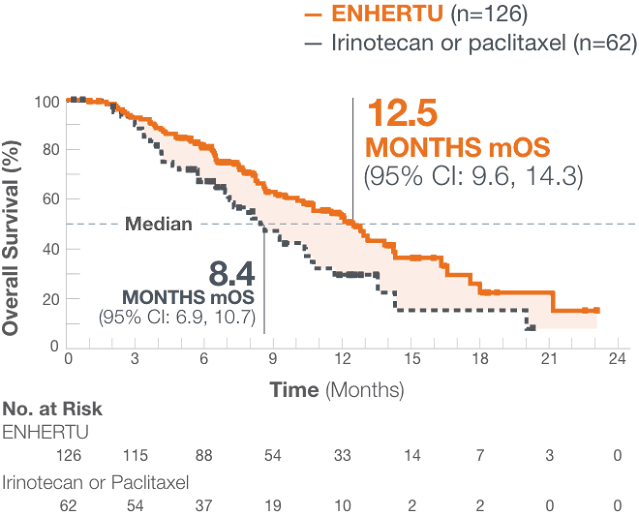WHAT IS THE SURVIVAL RATE OF ENHERTU?
HonyTube
February 22, 2023
Introduction
Enhertu,
also known as fam-trastuzumab deruxtecan-nxki, is a targeted therapy used to
treat HER2-positive breast cancer that has spread to other parts of the body or
cannot be surgically removed. While Enhertu has been shown to be an effective
treatment option, patients and their families often have questions about
survival rates and what to expect when undergoing treatment. In this article,
we aim to provide a comprehensive understanding of the survival rates
associated with Enhertu and how it compares to other treatment options.
Understanding Survival
Rates
Survival
rates are a way of measuring the percentage of people with a particular disease
who are alive after a certain amount of time. They are often used as a way of
comparing the effectiveness of different treatments. However, it's important to
note that survival rates are based on data from previous patients and do not
provide a guarantee of survival for any individual patient.
Enhertu and Survival
Rates
Enhertu
is a relatively new treatment option, and there is limited data available on
survival rates. However, the results from clinical trials have been promising.
In a phase II clinical trial, the objective response rate (ORR) for patients
who received Enhertu was 60.3%, with a median duration of response of 14.8
months. In a phase III clinical trial, the ORR for patients who received
Enhertu was 73.7%, with a median progression-free survival (PFS) of 19.4
months. While these results are encouraging, it's important to note that
individual outcomes may vary.
Comparing Enhertu to
Other Treatment Options
In
comparison to other treatment options for HER2-positive breast cancer, Enhertu
has shown promising results. For example, in a clinical trial comparing Enhertu
to the chemotherapy drug capecitabine, patients who received Enhertu had a
significantly longer PFS, with a median PFS of 16.4 months compared to 6.8
months for those who received capecitabine. Additionally, Enhertu has been
shown to have fewer side effects than traditional chemotherapy, making it a
more tolerable treatment option for some patients.
Conclusion
In
conclusion, Enhertu is a targeted therapy used to treat HER2-positive breast
cancer that has spread to other parts of the body or cannot be surgically
removed. While there is limited data available on survival rates, the results
from clinical trials have been promising. Enhertu has shown to have a high
objective response rate and a longer progression-free survival than other
treatment options, making it a potentially effective treatment option for
patients. It's important to note that individual outcomes may vary and patients
should discuss their treatment options with their healthcare provider.
Popular Posts
Categories
Tags
Most Recent
3/recent/post-list
Random Posts
3/random/post-list




0 Comments